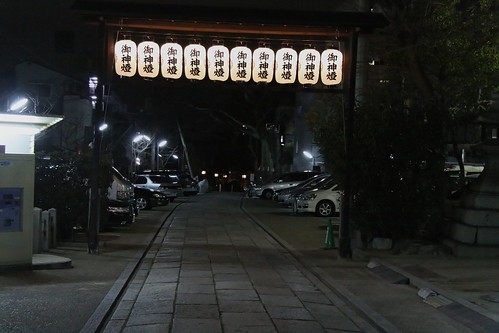[Accidentally hit publish before I was done.]
I’ve been following events closely all week, and although I have no deep insight or analysis on the situation, I thought I would share my list of recommended sources for breaking news, in order of importance.
Tehran Bureau: An Iranian-American cultural magazine that has been providing some of the best analysis of and historical context for ongoing events. Also see their Twitter feed, updated almost minutely with quotes being forwarded from inside Iran. As I write this, they have just updated
from trusted FB source: Mousavi is reported to be speaking to protesters on Jeyhoon street. He said a few minutes ago:
I am prepared for martyrdom, Shame on you and your tricks the coup government. end quote
Here is their latest full dispatch.
Andrew Sullivan’s blog: Andrew has been following this story closely since it began in earnest a week ago, and is working all day long to make his site a constantly updated stream of links to and quotes of every single breaking development and rumor. Although Iran is not remotely his field of expertise and he has little deep commentary to add, his blog is currently the best centralized location for links related to the ongoing story.
NYT “The Lede” blog: The NYT breaking news blog has been doing much the same thing as Andrew Sullivan, but with a slightly more conservative journalistic approach to posting entirely unverifiable details, and with slightly more analysis.
Iran Tracker.org: The name says it all. I believe this site has historically been focused more on watching Iran with a suspicious eye, as a possible military threat, but they seem to be doing a good job right now providing much-needed statistical analysis.
Juan Cole’s Informed Consent: A well known Middle East scholar’s ongoing commentary.
Fivethirtyeight.com: This one, a blog devoted to statistical analysis of US politics, might be a surprising addition to the list, but in fact Nate Silver has been using his analytic tools to examine the potential validity of fraud claims re: the Iranian election and is well worth a read.
And finally, I urge everyone to read the graphic novel Persepolis, or watch the animated adaptation thereof.
From what I have seen, the legal constitutional basis of The Islamic Republic of Iran is now, as of last week , neither Islamic nor Republican. I truly hope the protesters succeed in what is increasingly looking like a true popular revolution, or perhaps the second stage of the 1979 revolution.
These popular uprisings, even if they succeed in the short term, often still end poorly. It’s worth remembering “EDSA 2”, the popular uprising in The Philippines which overthrew corrupt president Joseph Estrada, putting Gloria Macapagal-Arroyo in charge. Well, President Arroyo is now widely regarded as worse than Ferdinand Marcos, responsible for unspeakable amounts of graft, and the extrajudicial killings of an unknown number of journalists and activists. In a sense, this is similar to the aftermath of the original 1979 Iranian Revolution, which began as a wide-ranging popular movement including Islamists, Socialists alike, to overthrow the Shah, but which was soon diverted in a heavily theocratic direction.
Based on the little I know of Mousavi’s pas, though, I hope he will be better. Many have said that Mousavi is “not a true reformer” or “not really that different from Ahmadinejad in policy terms” but I can’t help but believe that if he somehow manages to coast into power on this level of popular support he will find himself far more of a reformer than he imagined. Of course, if the uprising fails, they will kill him.

 Google’s commemorative logos have become a tradition over the years starting from simple doodles to more complex pieces,
Google’s commemorative logos have become a tradition over the years starting from simple doodles to more complex pieces, 